
During our previous lesson, we discussed the primary method of studying celestial bodies and phenomena, which is through astronomical observations. It is important to note that ancient astronomers faced numerous challenges as they were limited to observing the night sky with their naked eyes. However, a significant breakthrough in the field of astronomy occurred in 1608 when John Lippersgei, a Dutch eyeglass maker, discovered that the combination of two lenses aligned in a straight line could magnify objects. This discovery led to the invention of the telescope. In this video lesson, we will delve into the concept of a telescope and its practical applications. We will explore the distinctions between reflectors and refractors, familiarize ourselves with the key features of telescopes, and also examine the disparities between optical and radio telescopes.
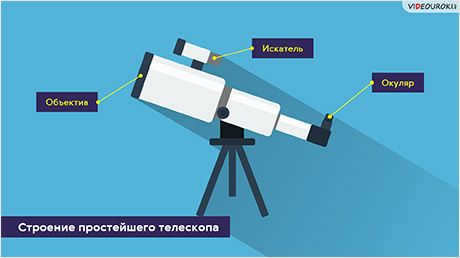
At the moment, it is not possible for you to watch or share the video lesson with your students
In order to gain access to this and other video lessons included in the package, you will need to add it to your personal account.
Unlock amazing possibilities


Outline of the Lesson “Telescopes”
For centuries, astronomers have been observing the positions and movements of celestial objects in the night sky. However, their observations were limited by the naked eye, which presented many challenges. It was through his logical reasoning, intellectual prowess, and mathematical calculations that Nicolaus Copernicus made groundbreaking discoveries.
Astronomy underwent a true revolution in 1608 when the Dutch eyeglass maker, John Lippersgei, stumbled upon the idea that two lenses aligned in a straight line could magnify objects. This marked the birth of the telescope.
Galileo was quick to seize upon this concept. In 1609, he assembled his first telescope with a modest threefold magnification and directed it towards the heavens. Thus, the telescope as we know it was born.
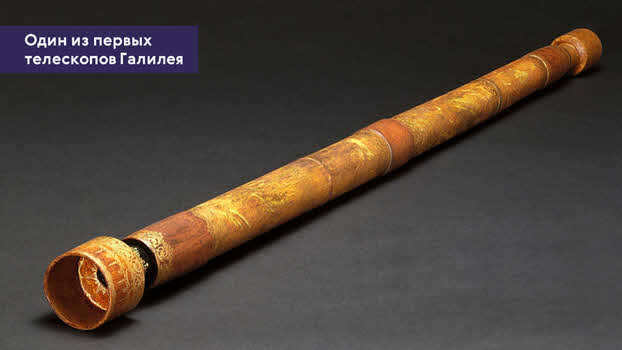
By the way, the term “telescope” originates from two Greek words: “tele” – meaning far away, and “skopeo” – meaning to look. It was suggested in 1611 by Ioannis Dimisianos, a Greek mathematician, for one of Galileo’s telescopes.
Telescopes are utilized to gather as much light as possible emitted by the object under examination and to be able to examine its intricate details, which cannot be seen with the naked eye. The dimmer the objects a telescope can perceive, the more powerful its ability to penetrate. Additionally, the capacity to distinguish delicate details characterizes the resolving power of the telescope. Both of these features of a telescope are dependent on the diameter of its objective lens.
The resolving power of a telescope refers to the minimum angle at which two closely positioned stars can be distinguished as separate entities rather than appearing as a single star.
In simpler terms, a telescope’s resolving power is determined by how small it can make the image of a star, allowing for greater detail and separation.
The formula for determining the resolving power of a telescope for visible light is:

The main characteristic of a telescope is determined by the formula where “D” represents the diameter of the objective lens in millimeters, and “α” represents the angular resolution in angular seconds.
Naturally, this is how we calculate the resolving power of an ideal telescope under ideal observing conditions. However, in reality, the resolving power will be significantly reduced due to atmospheric conditions and air movement, which affect the image quality.
You are probably aware that an optical telescope is composed of a lens and an eyepiece. If a lens is used as the objective, the telescope is called a refractor (derived from the Latin word for “refracting”). On the other hand, if a concave mirror is used as the lens, the telescope is referred to as a reflector (derived from the Latin word for “reflecting”).
Aside from reflectors and refractors, there is a wide usage of different mirror-lens telescopes.

Typically, in small and basic telescopes, the main characteristic is the use of a double-convex objective lens. According to the principles of physics, when an object is positioned behind the double focus of this lens, it forms a reduced, real, and inverted image. Since celestial bodies are located at vast distances, the incoming rays of light can be considered parallel. Consequently, the image of the celestial object will be situated in the focal plane of the lens.
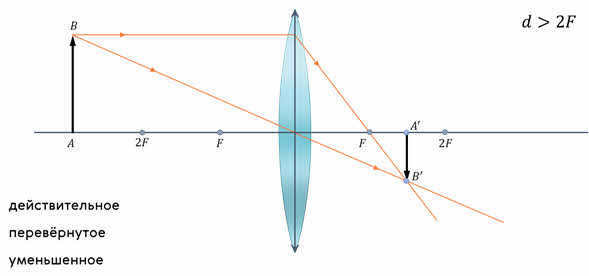
It is evident from the design that the telescope lens does not alter the angular size of the observed object. Hence, in order to obtain an enlarged image, it is necessary to employ an eyepiece – another lens (either converging or diverging). The focal length of the eyepiece should be shorter than that of the objective lens. By positioning the eyepiece in such a way that the image produced by the telescope lens is at its principal focus and making the required adjustments, we can observe an increase in the angular size of the object being observed. This magnification can be easily calculated as the ratio of the focal length of the objective lens to the focal length of the eyepiece.
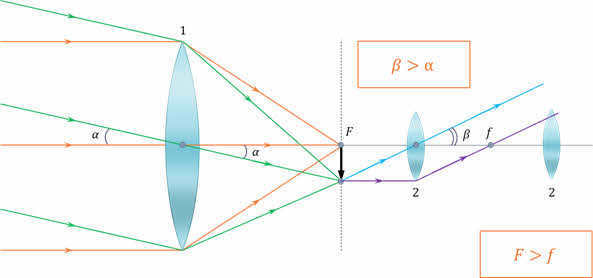
Undoubtedly, the initial telescopes were compact in size, offering only a modest level of magnification and lacking in terms of image quality. However, it didn’t take long to realize that the amount of light gathered by a telescope lens is directly proportional to its surface area. This realization prompted a gradual increase in the dimensions and capabilities of these instruments. For instance, in 1845, the renowned British astronomer William Parsons constructed the Leviathan telescope within the walls of his magnificent Earl’s Castle. This extraordinary contraption boasted a staggering weight of over 150 tons, a tube length of 17 meters, and a mirror with a diameter measuring 183 centimeters.

In our era, even larger optical telescopes are being produced. An example of this is the “Big Azimuthal Telescope” (known as BTA), which is the largest telescope in Eurasia. It is situated at the Research Institute of the Russian Academy of Sciences, located in the North Caucasus region at the base of Mount Pastukhov in the Zelenchuksky district of the Karachay-Cherkess Republic. The primary monolithic mirror of this telescope has a diameter measuring 605 centimeters. For nearly 18 years, this telescope held the distinction of being the largest in the world.
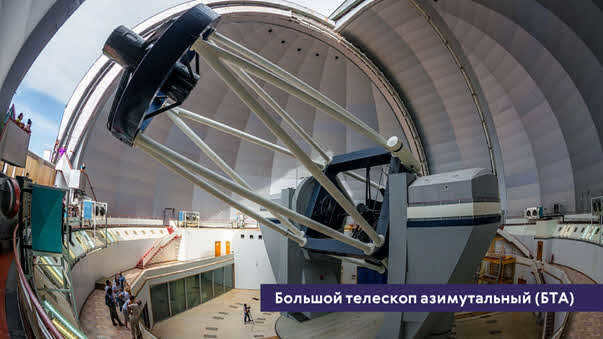
The Large South African Telescope, which was opened in 2005, is currently recognized as the largest optical telescope. Situated in the South African Astronomical Observatory near the town of Sutherland in the semi-desert Karoo region of South Africa, this telescope boasts a main mirror measuring 11 m x 9.8 m. The mirror is composed of 91 identical hexagons, each with a side length of 1 meter.
It is worth mentioning that the manufacturing and initial processing of the main mirror segments were carried out by an instrument-making company based in Lytkarino, Moscow Region. Furthermore, the mirror was calibrated with the assistance of specialists from the All-Russian Research Institute of Metrology, named after Dmitry Ivanovich Mendeleev.
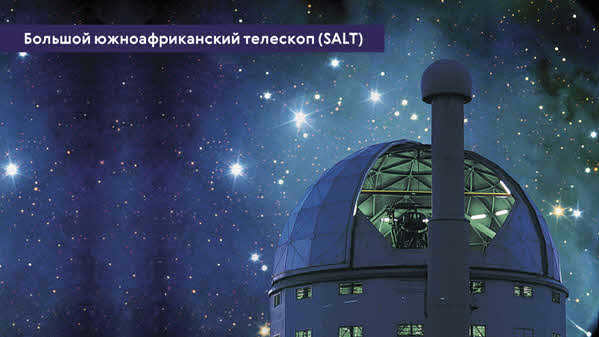
However, this is not the end of the story. In 2015, the construction of the future European Extremely Large Telescope commenced. Its primary feature will be a segmented mirror measuring 39.3 meters in diameter.
Visual observations by astronomers have been replaced by photography in the mid-19th century, which in turn has been replaced by electronic light receivers. One of the most widely used electronic light receivers is the charge-coupled semiconductor device (CCD). CCD matrices, similar to those used in astronomy, are commonly found in modern digital cameras. The key feature of CCDs is their high sensitivity, allowing them to detect almost every photon that reaches them. These devices are particularly essential for telescopes operating in automatic mode, such as the renowned Hubble telescope. The Hubble telescope, positioned approximately 560 kilometers above the Earth’s surface, benefits from the absence of atmospheric interference, resulting in a resolution of only 0.1”, which is nearly 7-10 times superior to that of an Earth-based telescope. Over the course of its 15-year operation, the telescope has transmitted over 1,022,000 high-quality images of various celestial objects back to Earth, including galaxies located over 13 billion light-years away.


The field of astronomy is now referred to as all-wave astronomy because it encompasses observations of celestial objects across the entire electromagnetic spectrum, not just the visible portion. However, only radio waves are able to reach the Earth’s surface without significant absorption. As a result, telescopes designed to study other parts of the spectrum are typically installed on orbital stations and spacecraft.
On Earth, radio telescopes are utilized to receive radio emissions from various celestial objects. These telescopes often feature parabolic reflectors, similar to traditional optical mirrors, but instead of collecting light, they capture radio waves. Radio telescopes can be categorized as either filled aperture or unfilled aperture telescopes.
Filled aperture antennas are comparable to mirrors in optical telescopes and are widely used. The Fast Telescope, also known as the “Five Hundred Meter Aperture Spherical Radio Telescope,” is the largest ground-based radio telescope with a filled aperture. It is located in Guizhou Province in southern China and was finished on September 25, 2016.
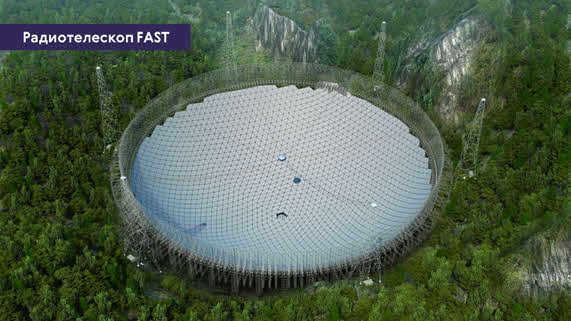
However, the capabilities of radio telescopes can be significantly enhanced by combining their antennas into a single system and utilizing them to observe the same celestial object. These antennas are referred to as unfilled aperture antennas. For instance, a system comprised of 27 antennas, each with a diameter of 25 meters, arranged in a specific configuration, can achieve an angular resolution of 0.04″. This level of resolution is equivalent to that of a radio telescope equipped with a 35-kilometer diameter antenna.
The largest ground-based open-aperture radio telescope in existence is known as RATAN-600 and is situated at the Special Astrophysical Observatory of the Russian Academy of Sciences.
A significant international project called Radioastron, in which leading Russian experts took part, was successfully implemented on July 18, 2011. The project focuses on the study of various celestial objects in the radio frequency range using a unified ground-space system. This system is comprised of the Spektr-R radio telescope, which has a ten-meter diameter antenna, placed in Earth’s orbit, as well as several radio telescopes located across different continents.
One of the unique features of the Spektr-R radio telescope is its ability to move along an elongated elliptical orbit, allowing it to reach distances of up to 350,000 kilometers away from Earth. This exceptional mobility enables the system to mimic the capabilities of a radio telescope with a colossal antenna size.
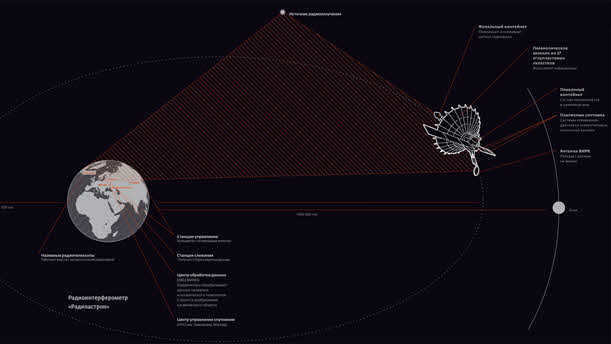
The Radioastron project has provided us with the opportunity to explore phenomena and processes like neutron stars and supermassive black holes, the formation and dynamics of star regions in our Galaxy, and issues regarding the evolution of the Universe.

When we gaze at the expanse of the sky, we are drawn to its allure. What lies beyond the clouds, and what secrets are hidden within its impenetrable darkness? These questions have been partially answered through the use of a telescope. Undoubtedly, this remarkable instrument has provided us with a breathtaking view of the universe, bringing us closer to comprehending the vastness of celestial space.
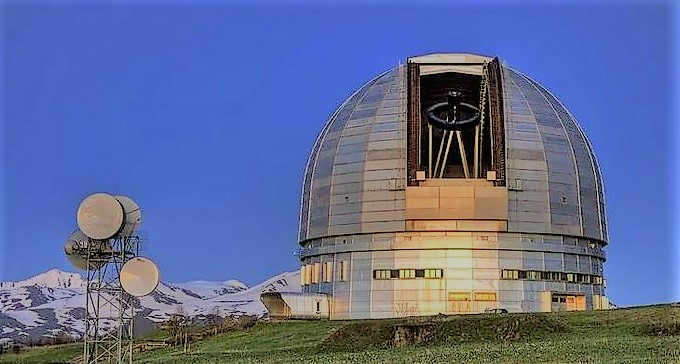
The Origins of the First Telescope
It is a well-known fact that the first telescope was invented by Galileo Galilei. However, what is not widely known is that he built upon the earlier discoveries of other scientists. One such example is the use of telescopes for navigation purposes.
Furthermore, artisans skilled in working with glass had already developed eyeglasses, which utilized lenses. The phenomena of refraction and magnification of glass had also been investigated to some extent.

No doubt, Galileo attained a significant accomplishment in the study of this field. Furthermore, he gathered and refined all the findings. Ultimately, he devised and introduced the world’s inaugural telescope. Admittedly, it only possessed a threefold magnification. However, it exhibited a remarkable image quality during that era.
By the way, it was Galileo who bestowed the name “telescope” upon his innovative creation. In the subsequent years, the scientist did not rest on his laurels. He enhanced the instrument to achieve a magnification of twenty times the size of the image.
Galileo not only invented a telescope but also became the first person to utilize it in exploring the cosmos and making numerous astronomical discoveries.
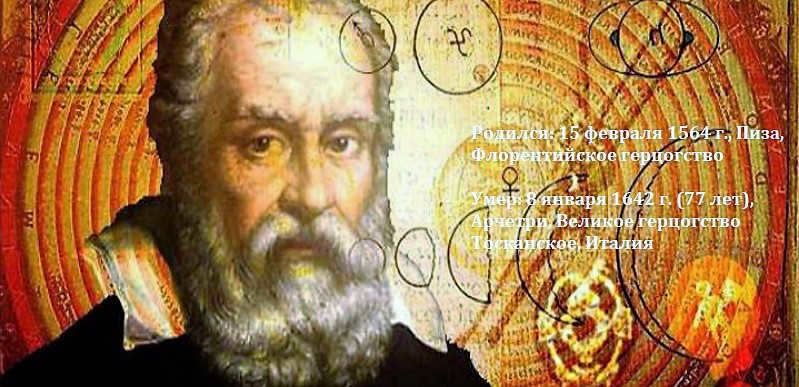
Telescope Features
A telescope is composed of a tube that is mounted on a specialized stand. It is equipped with axes that allow it to be aimed at the object being observed.
Furthermore, the optical instrument includes an eyepiece and a lens. The rear plane of the lens is perpendicular to the optical axis and is connected to the front surface of the eyepiece, which is similar to the objective in relation to the optical axis.
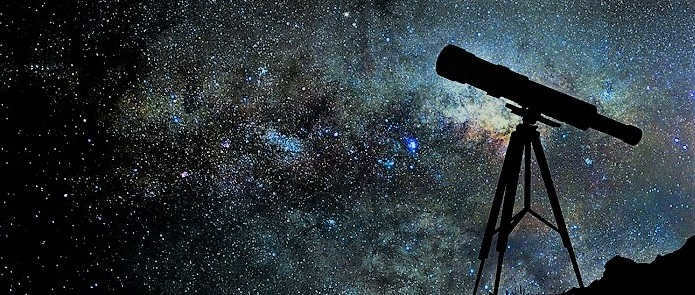
It is important to mention that telescopes utilize a specialized tool for adjusting focus.
The primary features of telescopes consist of magnification and resolution. The magnification of the image is contingent upon the focal length of the eyepiece and the object being observed.
Resolution is associated with the refractive properties of light. Consequently, the size of the observed object is restricted by the telescope’s resolution.
Various Categories of Telescopes in the Field of Astronomy
The classifications of telescopes in the field of astronomy are based on various construction techniques, specifically the utilization of different instruments as lenses, as well as the intended purpose of the device.
Currently, there exist several primary types of telescopes within the realm of astronomy. These include lenticular, mirror, and combined telescopes, each of which relies on a distinct light-gathering component.
Telescopes with lenses (dioptric).
Alternatively, they are known as refractors. These are the original telescopes. In this type, light is gathered by a lens that is enclosed by a spherical shape on both sides. As a result, it is regarded as birefringent. Furthermore, the lens serves as the objective.
What is intriguing is that it is possible to utilize not only a single lens, but an entire system of lenses.
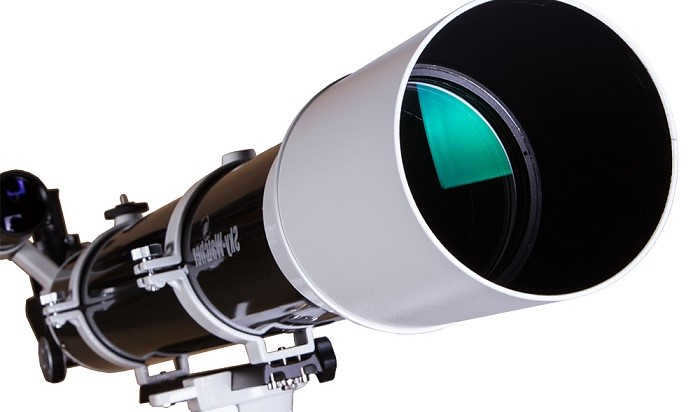
It is important to mention that convex lenses have the ability to refract light rays and converge them to a focal point, where the image is formed. To observe this image, an eyepiece is utilized.
What’s noteworthy is that the lens is positioned in such a way that the focal point coincides with the eyepiece.
Interestingly, it was Galileo who invented the refractor. However, modern telescopes consist of two lenses, with one lens collecting light and the other dispersing it. This helps to minimize deviations and errors.
Mirror telescopes (catoptric telescopes)
These types of telescopes are also known as reflectors. Unlike lenticular telescopes, mirror telescopes have a concave mirror as their lens. This mirror collects the star’s light at a single point and reflects it towards the eyepiece. As a result, there are minimal errors and no dispersion of light into rays. However, the use of a reflector does limit the observer’s field of view.
Mirror telescopes are the most widely used telescopes worldwide because they are much easier to develop compared to lenticular instruments.
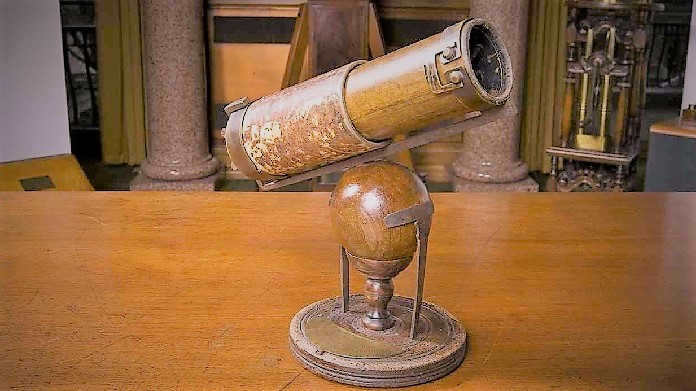
Combined Telescopes
These telescopes are a combination of mirrors and lenses to produce an image.
They can be further categorized into two types:
1) Schmidt-Kassegren telescopes have an aperture installed at the center of the mirror’s curvature. This helps eliminate spherical irregularities and deviations, resulting in a wider field of view and improved image quality.
2) Maksutov-Kassegren telescopes use a flat-convex lens near the focal plane to prevent field curvature and spherical deviations.
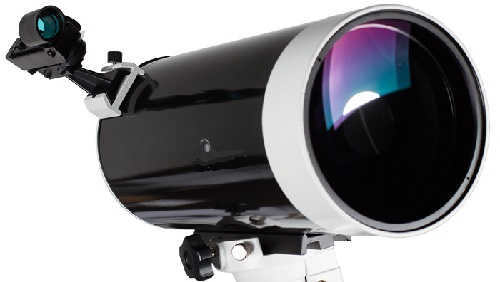
It is important to mention that the combined type of instrument is more frequently utilized in contemporary astronomy. By combining two distinct components for light collection, they enable the acquisition of more accurate data.
Radio telescopes
Radio telescopes are specialized instruments that are designed to receive and capture a specific wavelength of signals. These devices utilize antennas to both transmit and process the signals into visual images. Astronomers rely on radio telescopes as an essential tool for conducting scientific research and gathering valuable data about the universe.
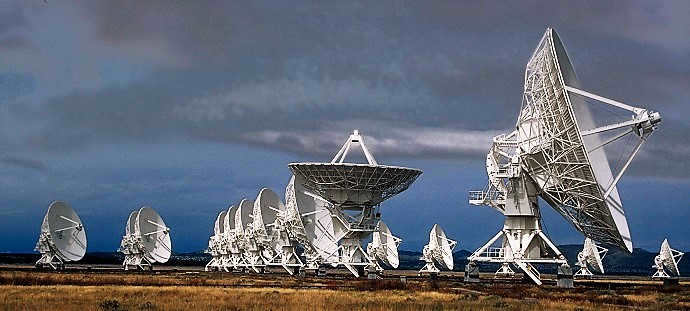
Models of telescopes that operate in the infrared spectrum
These types of telescopes have a design that is very similar to that of optical mirror telescopes. The way they acquire images is also quite similar. The rays are reflected by the lens and gathered at a single point. At this point, a specialized device measures the heat and captures the resulting image.
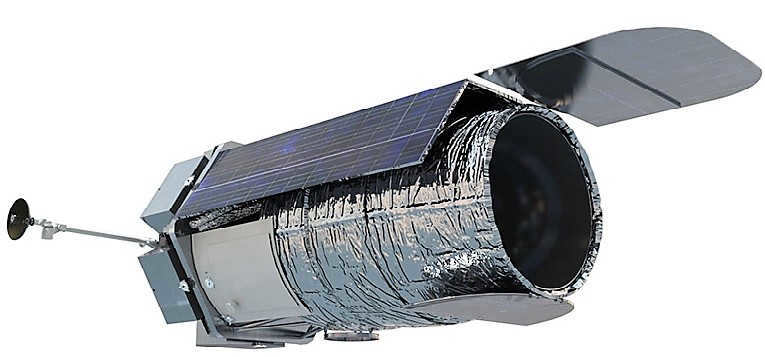
Contemporary telescopes
A telescope is an optical device used for observing celestial objects. It was created over fifty years ago, and since then, scientists have made numerous advancements and enhancements to its design. As a result, a variety of new models with improved quality and magnification capabilities have been developed.
In the modern era of technology, computerized telescopes are widely utilized. These telescopes are equipped with specialized software programs that take into account the unique visual perception of each individual. To ensure utmost precision, the captured image is displayed on a monitor, allowing for an accurate representation of the observed object. This method of observation also eliminates any distortions or aberrations that may occur.
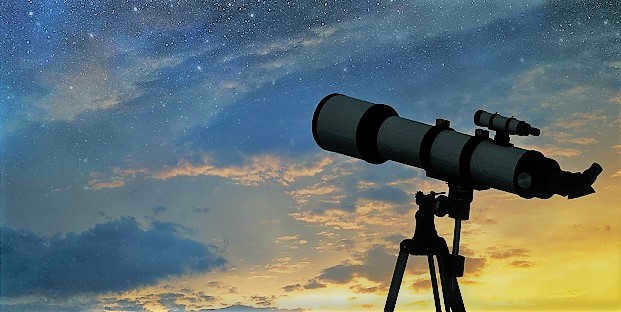
Furthermore, scientists in our era utilize multiple devices simultaneously, rather than just one. Furthermore, the telescope is linked to unique cameras that transmit data to a computer. This enables the acquisition of clear and precise information, which is, of course, utilized for the examination and exploration of the vast cosmos.
Presently, telescopes serve not only as observation instruments, but also as tools for measuring distances between celestial objects. To fulfill this function, spectrographs are attached to them, and the combination of these devices yields specific data.
Alternative categorization
There are additionally various kinds of telescopes. Nonetheless, they are employed for distinct objectives. For instance, X-ray and gamma-ray telescopes. Or ultraviolet apparatuses, which sift the image without any processing and illumination.
Furthermore, it is feasible to classify the instruments into professional and amateur. The former are utilized by scientists and astronomers. However, the latter are appropriate for personal use at home.
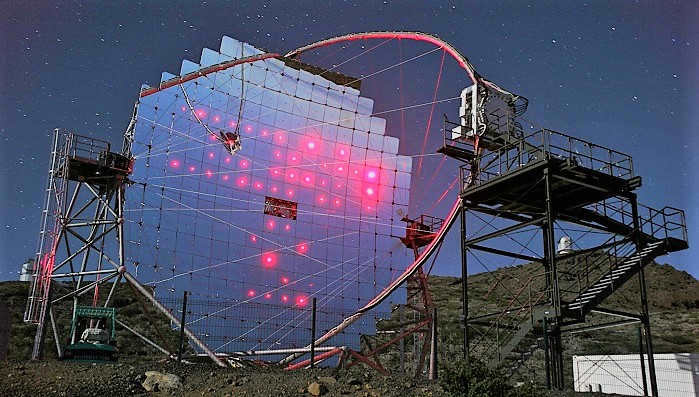
Choosing the Right Telescope for Amateur Astronomy
When it comes to selecting a telescope for amateur astronomy, the decision largely depends on what you are interested in observing. The various types and characteristics of telescopes have been outlined above, so it’s simply a matter of selecting the one that appeals to you the most. Personally, I would recommend considering a refractor or a combination telescope. However, ultimately, the choice is yours to make.

According to online sources, the top-notch amateur telescopes are manufactured by companies such as Celestron, Bresser, and Veber. Additionally, for personal use, the Sky-Watcher telescopes are highly recommended.
For centuries, telescopes have been utilized to study the celestial bodies and unravel the mysteries of the universe.
The invention and advancement of the telescope has greatly advanced our understanding of space. It is likely that everything we know about the universe has been shaped by this remarkable device. However, it is important to recognize the contributions of the scientists themselves.
Today, we have examined various types of telescopes and their unique features. Undoubtedly, technological progress has played a significant role in this field. As a result, we have gained valuable insights into celestial objects and the vastness of space. Additionally, we are able to marvel at and explore the beauty of the night sky, all thanks to this incredible invention.
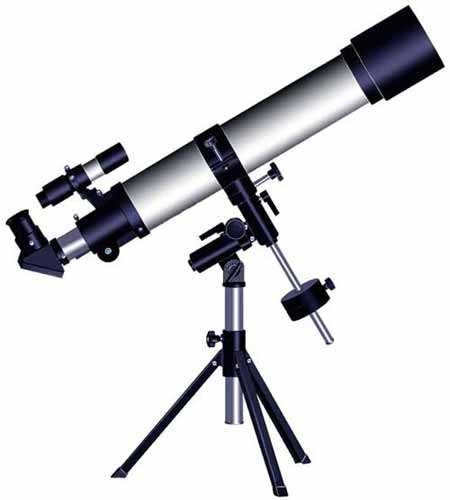
There is nothing more captivating than the celestial sky during the nighttime. Naturally, in urban areas, star gazing is not feasible, but if one truly desires, they can acquire their very own telescope. For those individuals contemplating the purchase of a telescope or simply intrigued by its mechanisms, our present article shall shed light on the matter.
The Origin of the Telescope
In its early days, the telescope started as a simple tube. This is not surprising, as before exploring the wonders of the universe, it was necessary to observe objects on Earth. The military and sailors were the primary users of telescopes, which is hardly surprising given their need for navigation and surveillance.
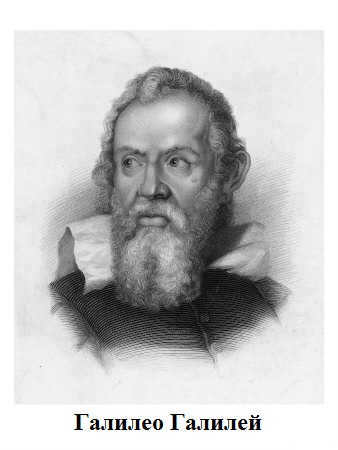
Spyglasses, also known as telescopes, made their debut in the early 17th century. The credit for the invention is hotly contested by several notable individuals.
One of the earliest recorded mentions of a telescope, specifically for observing celestial bodies, can be attributed to Leonardo da Vinci. In his notes from 1509, he includes sketches of a basic one- and two-lens telescope.
However, the official birth year of the telescope is commonly recognized as 1608. It was during this year that John Lippersgei, a skilled Dutch craftsman who specialized in making glasses, unveiled his groundbreaking invention in The Hague.
Mr. Lippersgei, in his desire to officially record his groundbreaking invention, decided to seek a patent. However, he was met with disappointment upon discovering that other skilled artisans had already unveiled their own versions of telescopes. Notable competitors included Zachary Jansen from Middelburg and Jacob Metius from Alkmaar, who had even gone so far as to apply for patents in the Dutch parliament prior to Mr. Lippersgei.
Who was the first person to gaze at the heavens?
It didn’t take long from the invention of the telescope to the moment when we could observe celestial bodies. Just a year after Lippersgei’s presentation in The Hague, Galileo Galilei became the first person to look at the sky using this new invention.
In 1609, Galileo Galilei constructed his own telescope using a convex lens and concave eyepiece. Initially, his telescope provided a magnification of about three times, but Galileo was able to achieve a magnification of 32 times shortly after.
Regarding the origin of the term “telescope,” there are two versions, both of which agree on one thing: Galileo played a crucial role in popularizing the name for this instrument used to observe the sky. The two authors who are credited with coining the term are mathematician Giovanni Demiziani and Federico Cesi.
Device and Operation Principle
- Telescope Tube: This is essentially the main body of the telescope, serving as its primary structural component and housing the lens.
- Finder: The finder is a small telescope tube that is typically aligned with the main tube. It is used for initial aiming at the desired object.

- Eyepiece: The eyepiece is an interchangeable component of the telescope that is used for observation. Different eyepieces have varying focal lengths, which affects the magnification and field of view.
- Light Filters: These filters are used to adjust the brightness of observed objects, such as the moon. They are not strictly necessary, especially for beginners.
- Mounting. A telescope mount typically consists of two rotary axes and is usually placed on a tripod. There are two types of mounts: azimuthal and equatorial, with the latter being more expensive.
- Diagonal mirrors. These mirrors are used for observing objects located at the zenith.
If you ask “How does a telescope work?”, two out of three people will probably mention magnifying objects and lenses. However, they are not entirely correct. While magnification is important, the high level of detail in observed objects is achieved through the collection of light. The larger the telescope’s main light-gathering element (lens or mirror), the greater the level of detail in the observed celestial body. 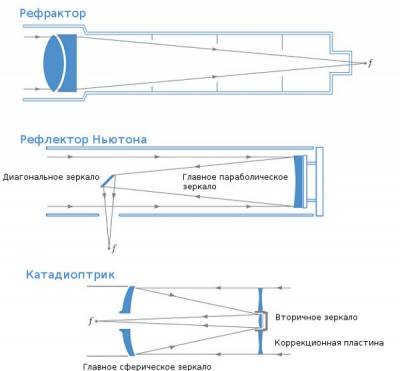
Types of telescopes
- Refractors. Refracting telescopes, also known as refractors, utilize a large objective lens as the main light-gathering element.
- Reflectors. Reflecting telescopes, or reflectors, employ a concave main mirror to gather light and create an image.
- Catadioptric. These are telescopes that combine both mirrors and lenses. The integration of a mirror and a lens allows for the production of high-quality images.
Purchasing a telescope
Deciding on the exact object of observation and its purpose is often the most challenging part. If you’re unsure, it’s advisable to opt for a telescope that allows for viewing a variety of celestial bodies. Seasoned experts recommend beginners to choose telescopes with a lens diameter ranging from 10-15 to 20-25 cm. The material of the telescope tube is also worth considering. While paper may be lightweight, it won’t withstand the test of time, especially during outdoor field observations. For newcomers, it’s recommended to purchase telescopes that come with a complete set of accessories. An azimuthal mount is the ideal choice. The main parameter to consider when selecting a telescope is its aperture. This technical term refers to the diameter of the telescope’s primary mirror or lens. For beginners, a minimum aperture of 70 mm is optimal. Larger apertures are possible, but their suitability depends on the intended location and purpose of the telescope.
I. Introduction
§ 2. Observations – the foundation of astronomy
Supplementary resources for the lesson
1. Characteristics of astronomy and its methodologies
The unique characteristics of astronomy are determined by the vast spatial and temporal scales of the objects and phenomena being studied.
Scientists mainly obtain information about what occurs beyond Earth in outer space through the analysis of light and various forms of radiation emitted by celestial objects. Observations serve as the primary source of data in the field of astronomy. This fundamental characteristic distinguishes astronomy from other natural sciences, like physics or chemistry, which heavily rely on laboratory experiments and planned procedures. The ability to conduct experiments outside of Earth only became possible with the advent of space exploration. However, even in these instances, the scope of research remains limited to small-scale studies, such as examining the chemical composition of lunar or Martian rocks. It is challenging to envision experiments conducted on an entire planet, star, or galaxy.
The significant duration of numerous phenomena studied in astronomy (ranging from hundreds to millions and billions of years) explains the second characteristic. As a result, direct observation of many of these phenomena is impossible. When the phenomena are especially slow, observations of numerous related objects, such as stars, must be conducted. This is how the primary information about the evolution of stars is obtained. A more detailed discussion of this will follow.
The third distinct feature of astronomy arises from the need to determine the coordinates of celestial bodies in space and the inability to immediately discern which ones are closer or farther from us. At first glance, all observed celestial objects appear equally distant.
Long ago, people had the belief that all stars were situated on the celestial sphere, which would rotate around the Earth. Over 2000 years ago, astronomers developed techniques to determine the position of any celestial body on the celestial sphere in relation to other objects in space or landmarks on Earth. Even though we now understand that the celestial sphere is not a physical entity, the concept is still useful in modern astronomy.
Now, let’s create the celestial sphere and draw a line from its center towards star A (Fig. 1.1).
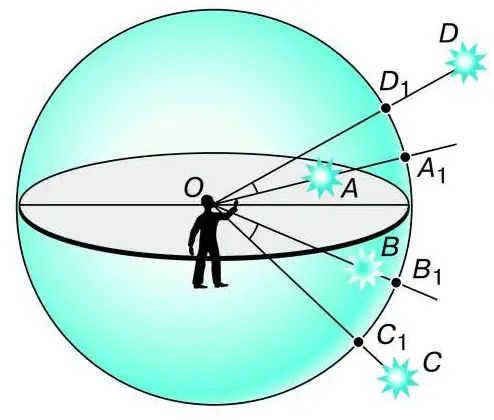
To mark the position of each star on the surface of the sphere, we place point A1 where the ray intersects the sphere for star A, and point B1 for star B. By repeating this process for all observed stars, we create a starry globe on the surface of the sphere. If the observer is located at the center of this imaginary sphere, the directions to the stars and their images on the sphere will align. The distances between stars on the celestial sphere can only be described in terms of angles. These angular distances are measured by the central angle between the rays pointing to each star or by the corresponding arc on the sphere’s surface.
To get a rough estimate of angular distances in the sky, it can be helpful to keep in mind the following information: the angular distance between the two outermost stars of the Big Dipper (α and β) is approximately 5 degrees (Fig. 1.2), and from α of the Big Dipper to α of the Little Dipper (Polaris) – which is 5 times further – is about 25 degrees. Another simple way to estimate angular distances is by using the fingers of an outstretched hand.
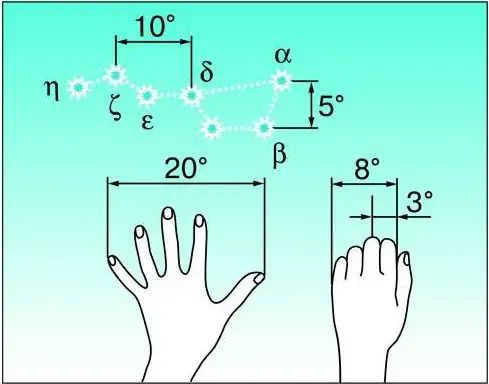
Only two celestial bodies, the Sun and the Moon, appear to us as circular shapes. The sizes of these circles are almost the same, measuring approximately 30 minutes of arc or 0.5 degrees. The planets and stars, on the other hand, appear much smaller and appear as mere points of light. If an object’s size in our field of view exceeds 2-3 minutes of arc, it will not appear as a point. This means that our eyes can distinguish one star from another if the angular distance between them is greater than this value. In simpler terms, an object will not appear as a point if its distance does not exceed its dimensions by more than 1700 times.
Below, we will discuss how we can determine the distance to celestial bodies and their linear dimensions based on angular measurements.
In order to locate a celestial body in the sky, it is necessary to specify its position relative to the horizon. This is done using the system of horizontal coordinates – azimuth and altitude. It is not a difficult task for an observer on Earth to determine these directions. The vertical direction can be determined using a plumb line, as shown in Figure 1.3. The plumb line ZZ’ passes through the center of the sphere (point O), and the point Z directly above the observer’s head is known as the zenith.
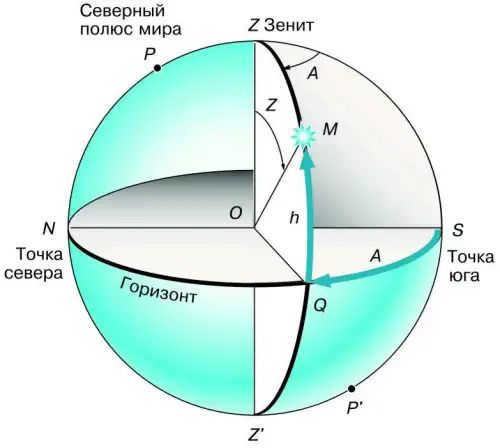
The position of the luminary in the sky at a specific time is indicated by horizontal coordinates, which are always changing due to the Earth’s rotation. In fields like geodesy, altitude and azimuth are measured using specialized optical instruments called theodolites.
2. telescopes
The primary tool utilized in astronomy to observe celestial bodies, receive and analyze the radiation emitted from them is a telescope. The term is derived from two Greek words: tele – meaning far away, and skopeo – meaning to look. The telescope serves two main purposes: firstly, to gather as much light as possible from the object being studied, and secondly, to allow for the examination of its intricate details that are not visible to the naked eye. The telescope’s ability to reveal fainter objects determines its capacity to unveil the unseen, thus indicating its penetrating power. The resolving power of the telescope is defined by its capability to distinguish fine details. Both of these qualities are influenced by the diameter of the objective lens.
The amount of light collected by the lens is directly proportional to its area (which is equivalent to the square of its diameter) (Fig. 1.4).
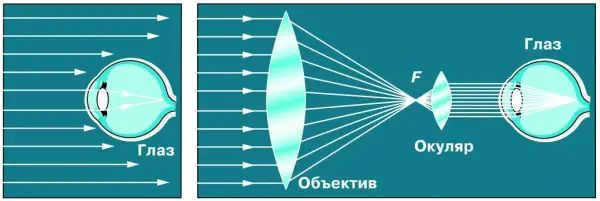
The human eye has a maximum pupil diameter of 8 mm, even in complete darkness. However, the lens of a telescope can exceed the diameter of the eye’s pupil by tens and hundreds of times. This allows telescopes, combined with modern radiation receivers, to detect stars and other objects that are 100 million times fainter than what can be seen with the naked eye.
The resolving power of a telescope is determined by the size of the image it produces for a luminous point, such as a star. The smaller the size of the image, the better the resolving power. If the distance between the images of two stars is smaller than the size of the image itself, the stars will merge into one. Due to diffraction, the image of a star will not appear as a point, but rather as a bright spot known as a diffraction disk. The angular diameter of this disk is equal to
In the formula, λ represents the wavelength of light, while D stands for the diameter of the telescope lens. The value 206,265 corresponds to the number of seconds in a radian. If we consider a school telescope with a lens diameter of 60 mm, its theoretical resolving power would be approximately 2″. It’s important to note that this exceeds the resolving power of the naked eye by a factor of 60 on average. However, the actual resolving power of the telescope will be lower due to atmospheric conditions and air movement, which significantly affect the image quality.
If a lens is used as the objective of a telescope, it is known as a refractor (derived from the Latin word “refracto” meaning refracting). On the other hand, if a concave mirror is used, it is called a reflector (from “reflecto” meaning reflecting).
Aside from refractors and reflectors, there are also various types of mirror-lens telescopes in use today. One example is the meniscus telescope, depicted in Figure 1.5.
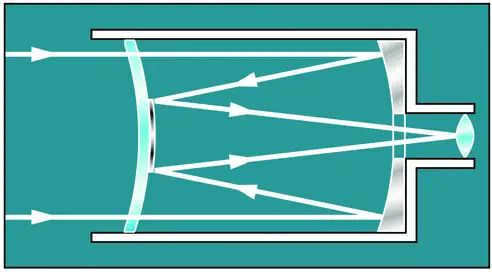
In small telescopes, a double-convex collecting lens is typically used as the objective lens. When an object is located beyond the double focal length, it produces a reduced, inverted, and real image. This image is positioned between the focal point and the double focal point of the lens. The distances to the moon, planets, and especially the stars are so vast that the rays emanating from them can be considered parallel. Consequently, the image of the object will be situated in the focal plane.
Let’s construct an image of the Moon using a lens 7 with a focal length of F (Fig. 1.6).
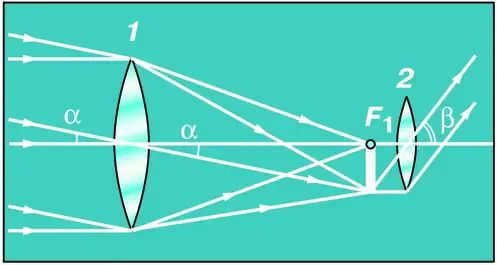
The lens creates an image of the object, where the size is determined by the focal length Fn and the angular dimensions a of the object in the sky. Let’s now use a different lens – eyepiece 2, placing it at a distance equal to the focal length of this lens – f from the image of the Moon (point F1).
The focal length of the eyepiece should be smaller than the focal length of the lens. When we observe the image produced by the eyepiece, we can see that it magnifies the angular size of the Moon: the angle β is noticeably larger than the angle α.
If the image produced by the lens is close to the focal plane of the eyepiece, the magnification provided by the telescope is equal to the ratio of the focal length of the lens to the focal length of the eyepiece:
The telescope enhances the apparent angular sizes of the Sun, Moon, planets, and the details on them, while stars, due to their vast distance, continue to appear as bright dots in the telescope.
By incorporating interchangeable eyepieces, it becomes possible to achieve various levels of magnification using the same lens. As a result, the effectiveness of a telescope in astronomy is not determined solely by its magnification, but also by the diameter of its lens. Typically, visual astronomical observations are conducted with magnifications of up to 100 times. The reason for this limitation is the Earth’s atmosphere, which interferes with higher magnifications. Even slight air movement, which may go unnoticed to the naked eye (or at lower magnifications), can cause the image’s fine details to appear blurry and distorted. This also poses challenges for modern observations that utilize photoelectronic light receivers. Consequently, astronomical observatories that employ large telescopes are strategically situated in regions with favorable astroclimates, characterized by a significant number of clear days and nights, along with a high level of atmospheric transparency and stability. These observatories are typically positioned at altitudes several kilometers above sea level.
A cutting-edge telescope is a sophisticated apparatus that boasts highly precise optics of varying dimensions, top-of-the-line radiation detectors, and an extensive array of scientific and operational instruments. Reflectors are the preferred type among the most prominent contemporary telescopes.
The biggest reflector telescope in Russia (Fig. 1.7) boasts a mirror with a diameter of 6 meters, polished to an accuracy of one micrometer. The mirror has a focal length of 24 meters and weighs approximately 40 tons. The total weight of the entire telescope installation exceeds 850 tons, with a height of 42 meters. A computer system controls the telescope, enabling precise targeting of objects of interest and maintaining them within the field of view for extended periods. The telescope smoothly tracks the Earth’s rotation, ensuring continuous observation. It is housed at the Special Astrophysical Observatory of the Russian Academy of Sciences, located in the North Caucasus near the village of Zelenchukskaya in Kabardino-Balkaria, at an altitude of 2100 meters above sea level.
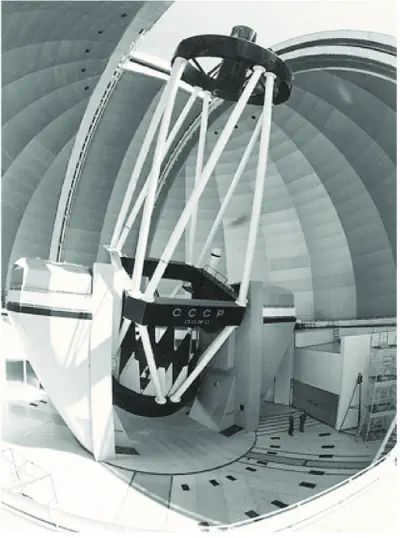
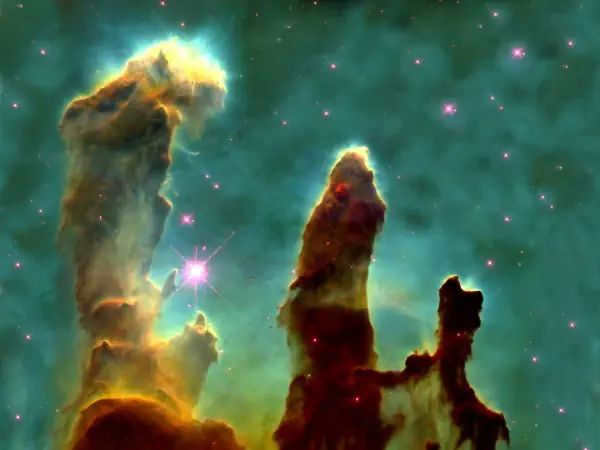
All-wavelength astronomy is the term used to describe the field of astronomy that encompasses observations of celestial objects across the entire electromagnetic spectrum, not just in the optical range. To accomplish this, a variety of instruments are utilized, each capable of detecting radiation within specific ranges of electromagnetic waves, including gamma, X-ray, ultraviolet, infrared, and radio radiation.
When it comes to radiation reaching the Earth’s surface from space, only optical and primarily radio radiation is able to do so without significant absorption. Other forms of radiation are largely unable to penetrate the Earth’s atmosphere, instead being scattered and absorbed. As a result, telescopes designed for studying the universe within these particular wavelength ranges are typically deployed on artificial satellites, orbital stations, and other spacecraft.
Radio telescopes are utilized for the reception of radio emissions originating from a variety of celestial objects. The key components of a radio telescope consist of an antenna, a receiver, and instruments for signal recording. The majority of radio telescopes possess antennas that possess a diameter of up to 100 m and are shaped similarly to the concave mirrors of a reflecting telescope (Fig. 1.8). However, instead of collecting light, these antennas are designed to capture radio waves. It is worth noting that the larger the surface area of the antenna, the more sensitive it becomes to detecting faint radio sources.

The electromagnetic waves received by the antenna are converted into electrical signals, which are then transmitted to a highly sensitive receiver. In modern radio telescopes, the signals are recorded by a computer, which digitally stores them and presents the results visually.
The capabilities of radio telescopes can be significantly enhanced when their antennas are combined into a system and used to observe the same object. For instance, a system comprising of 27 antennas, each with a diameter of 25 m and arranged in a specific configuration, can achieve an angular resolution of 0.04″. This is equivalent to the capabilities of a radio telescope with a single antenna that has a diameter of 35 km.
In 2011, a team of Russian scientists embarked on an ambitious global initiative known as the “Radioastron” project. This groundbreaking endeavor involves the deployment of the Spektr-R radio telescope, which boasts a remarkable antenna diameter of 10 meters, into the Earth’s orbit. Additionally, radio telescopes positioned across all continents will be integrated into a unified ground-space system, enabling the study of diverse celestial entities in the radio frequency range.
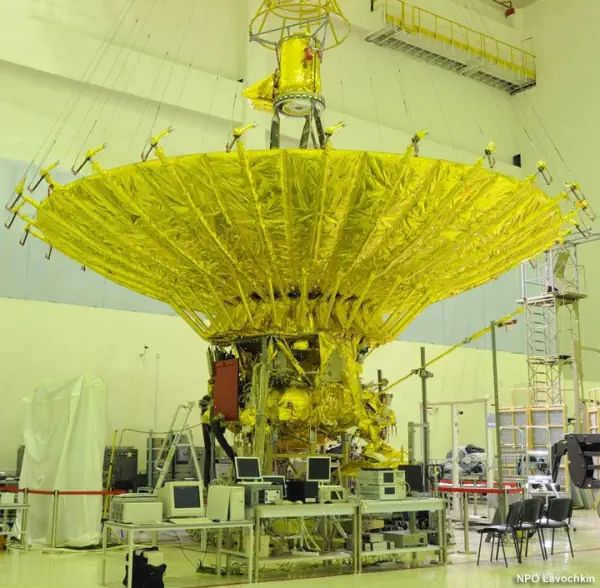
Moving in an elongated elliptical path, the “Spektr-R” spacecraft has the ability to travel far away from Earth, reaching distances of approximately 350,000 kilometers. As a result, this system is comparable in capabilities to a radio telescope with an antenna of immense proportions. With its exceptional resolving power, on the order of millionths of an angular second, it surpasses the capabilities of ground-based radio telescope networks by 250 times, and even outperforms the Hubble telescope in the optical range by more than 1000 times.
The RadioAstron project has yielded novel insights into various phenomena and processes, including neutron stars and supermassive black holes. It has also enhanced our understanding of the structure and dynamics of star-forming regions within our own galaxy, while advancing our knowledge of the structure and evolution of the Universe as a whole.
Questions
1. What are the characteristics of astronomy?
2. What are the horizontal coordinates called for luminaries?
3. Explain how the Sun’s coordinates change as it moves across the horizon throughout the day.
4. Despite the Sun’s diameter being about 400 times larger than the Moon’s diameter, why are their angular diameters nearly equal?
5. What is the purpose of a telescope?
6. What is considered the primary feature of a telescope?
7. Why do luminaries move out of the field of view when observed through a telescope?
Exercise 1
1. Determine the telescope’s magnification by using a lens with an optical power of 0.4 dptr as the objective lens and a lens with an optical power of 10 dptr as the eyepiece.
2. Calculate the amount of light collected by the largest Russian telescope-reflector (mirror diameter 6 m) compared to a refractor telescope with a lens diameter of 60 mm.
Task 2
Choose the necessary lenses for constructing a basic refractor telescope. Calculate the optical power of the lens and eyepiece to determine the achievable magnification for such a telescope.
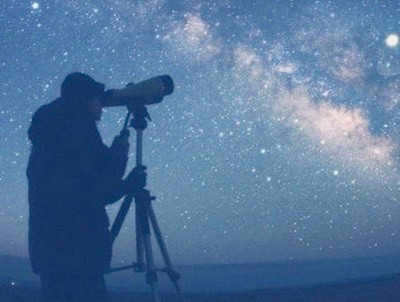
A telescope is a device used to observe distant objects. It is primarily used in astronomy to study the night sky, but it can also be utilized to magnify and capture images of celestial bodies.
Origin of the Invention
Historical records indicate that the initial creation of the telescope dates back to the year 1609 when the renowned scientist Galileo Galilei first crafted this remarkable device. Drawing inspiration from the design of seafaring telescopes, Galilei incorporated similar principles into his invention. However, he further enhanced its capabilities by employing more potent lenses and meticulously calculating their focusing to produce a magnifying effect. Consequently, the final iteration of his creation boasted an impressive 20x magnification capability. Galileo Galilei not only coined the contemporary name for this groundbreaking instrument but also became the pioneer in utilizing optical equipment for celestial exploration. The first telescope played a pivotal role in numerous astronomical breakthroughs. Today, this invaluable artifact is safeguarded in a museum located in Florence.
The Structure of a Telescope
In its traditional form, a telescope consists of a tube that is mounted on a device known as the telescope mount. This mount allows for precise positioning of the telescope, enabling it to be directed towards specific objects of interest.
Within the tube of the telescope, there are two important optical components: the eyepiece and the objective lens. These components work together to magnify the image of a distant object, with the level of magnification being determined by the focal length between the objective and eyepiece.
The telescope also features an adjustment mechanism that allows for changes in the focal length. This means that the object being observed can be zoomed in at different levels of magnification. Initially, the object is located in the sky using the telescope’s minimum settings, and then the image size is increased to reveal finer details.
The level of magnification of a telescope is determined by the lenses that are used as its objective and eyepiece. Of course, the higher the magnification, the more expensive the telescope will be. Classical telescopes with more complex designs consist of a series of lenses that are installed in the tube, with each lens increasing the magnification of the device.
Categories of telescopes based on operational principle and structure
The basic design of a telescope follows the classical scheme, which is quite similar to binoculars, telescopes, and microscopes. However, it is equipped with larger lenses and features different focusing mechanisms. In addition to the traditional design, several other variations have been developed and are still widely used today.
The most renowned types of telescopes are as follows:
- Dioptric telescopes.
- Catoptric telescopes.
- Combined telescopes.
- Radio telescopes.
- Infrared telescopes.
All of these telescopes operate on distinct principles, possess varying production costs, and vary in their magnification ratios. Infrared and radio telescopes are exclusively used for professional research purposes, while the other types can be compact enough to be installed outside an observatory or in a private home.
Dioptric
A dioptric telescope is an age-old optical instrument that utilizes lenses. Its functioning is based on the concept of converging the light emitted by celestial objects using the objective lens. This lens, or a combination of lenses, is always convex, causing the light to converge at a specific point. To enable human eyes to perceive the image, the focused light is directed towards the eyepiece. The key requirement for the proper functioning of this device is the alignment between the focus of the lens and the eyepiece.
Catoptric
Telescopes with this design are also known as mirror telescopes. They utilize a concave mirror as their primary component. This mirror collects and reflects the light from stars and other celestial objects towards the eyepiece. The key advantage of these devices is their ability to fully transmit the light spectrum. In contrast, dioptric devices distort the light that passes through the lens, resulting in an image that may not accurately represent reality. Mirror telescopes, on the other hand, provide a detailed view of the magnified object, including its color, brightness, and even the depth of dark areas.
One drawback of mirror telescopes is their restricted field of view. They only capture a small portion of the image, preventing the viewer from seeing the entire picture as optical devices can. However, the advantage of mirror telescopes is their affordability, which leads to a higher production rate compared to other telescope types. As a result, they are widely utilized by amateur astronomers.
Combined devices
This category of devices encompasses catadioptric telescopes, which utilize a combination of lenses and a concave mirror. These devices offer a high-quality image while also providing a wider field of view compared to traditional mirror telescopes.
These devices can be further divided into two main subspecies:
Each of these subspecies is named after its respective inventor. The Schmidt-Cassegrain telescope features an aperture located in the center of the mirror’s curvature. This design allows for a larger field of view and eliminates spherical aberration and deviation.
Instruments based on the Maksutov-Kassegren principle incorporate an optical lens near the focal plane. This lens is convex on one side and flat on the other, effectively compensating for field curvature and preventing spherical aberration.
Radio telescopes
Radio telescopes are a class of instruments that are significantly more expensive than previous ones. They are not practical for amateur space observation due to their large size and high cost. These devices are specifically designed for precise scientific research and do not include any optical elements to capture light from space objects. Instead, they use large antennas to capture signals in a single frequency. These antennas can have a diameter of up to 25 meters. The data collected by these telescopes is then transmitted to computer equipment, which converts the signals into visual images.
Typically, radio telescope antennas are interconnected and can be situated in various locations worldwide. An instance of implementing such initiatives is the VBA network, which has been in operation since 1993. This particular system is capable of reconstructing the image of any object with a brightness temperature exceeding one million degrees Kelvin. The network’s antennas are spread across vast distances from their base, with the farthest one located at 8600 km away.
Thermal Imaging
These devices are capable of detecting and perceiving infrared radiation emitted by objects. Essentially, they respond to heat. Because of their exceptional sensitivity, these devices can detect infrared radiation that is imperceptible to the human skin.
Using a telescope lens, the infrared radiation is captured and focused onto a specific point. The thermally sensitive component of the device then measures the heat, converts it into visual information, and captures an image for further analysis.
A radio telescope and an infrared telescope provide the opportunity to observe luminous stars, such as the Sun’s surface, without the need for additional protective measures. This is due to the fact that mirror, optical, and combination instruments specifically detect the light that, when focused, can cause severe heat and eye burns. Gazing at the Sun through a telescope with a 50x magnification, even for a brief moment, can result in temporary or permanent blindness. Additionally, if the eye remains within the concentrated light for 20 seconds, it can suffer significant damage.
In the Earth’s atmosphere, the use of infrared telescopes is not feasible. The radiation emitted by the planet causes interference and affects the sensitivity of these telescopes. As a result, they can only be utilized in outer space. The Hubble spacecraft, which was launched in 1990 through a collaborative effort between NASA and the European Space Agency, is the most well-known example of such instruments. Apart from infrared cameras, this device also incorporates reflectors to capture images using the Ritchie-Cretien system.
How to Choose a Telescope for Amateur Sky Observation
When it comes to selecting a telescope for amateur sky observation, there are a few options to consider – lenticular, mirror, or combined devices. However, if you also have an interest in observing terrestrial objects, it’s important to note that additional accessories may be required.
For example, a mirror or combined telescope typically produces a mirrored image from left to right. This can be corrected by using a diagonal prism instead of a regular diagonal mirror. Many telescope sets already include additional parts to compensate for such distortions. If you plan on observing terrestrial objects, it’s worth paying attention to this detail. However, when it comes to studying celestial bodies, having an inverted or reflected image from left to right is not as significant.
The primary factors to consider when selecting a telescope are:
The telescope’s brightness is determined by the ratio of its focal length to the diameter of the objective lens. An ideal brightness enables you to capture clear images through the eyepiece. If the ratio is 1:10, even relatively bright features on celestial bodies may appear as dark spots. For amateur astronomers, telescopes with apertures around 1:5 and 1:7 are typically deemed optimal. When purchasing a telescope, it is generally advisable to prioritize a larger lens over a smaller one.





